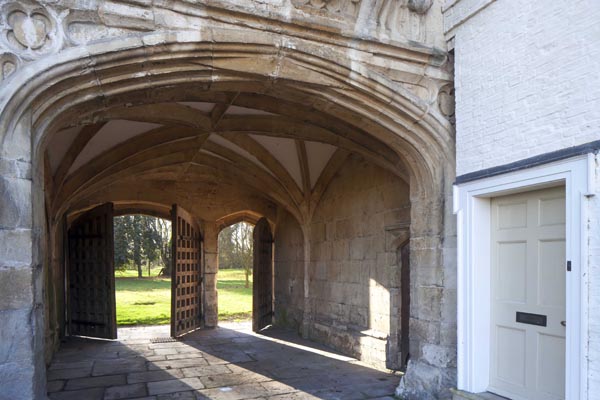
"I arrest you of high treason"
The Earl of Northumberland to Cardinal Wolsey
Cawood Castle was the principal palace of the Archbishops of York from the 13th century, two hundred years before the building of the Gatehouse seen today, until its destruction was ordered by Parliament in 1646. The Archbishop probably had a fortified manor at Cawood in Norman times: records show that land at Cawood was given to the Archbishop of York by King Athelstan for his victory over the Danes at Brunanburg in 937.
Cawood had traditionally been a place where royalty stayed when they came north. In 1255 King Henry III stayed here on his way to meet his son-in-law Alexander III of Scotland, Queen Margaret stayed at Cawood with her court while Edward I was campaigning in Scotland against William Wallace, and Edward II visited in 1314 with his wife Isabella shortly before his disastrous defeat at Bannockburn against Robert the Bruce.
While Cawood hosted many royal visits and occasions of great ceremony throughout the Middle Ages, none quite rival the events of 1529-30 for political significance. Thomas Wolsey, the son of a butcher and grazier of Ipswich, rose to spectacular wealth and power through an unstoppable combination of ambition and ability. Barely five years after Henry VIII became King, Wolsey had been made Archbishop of York, a Cardinal of the Roman Catholic Church and Lord Chancellor of England. By his mid-40s, he had become the most powerful person in the kingdom after the King himself.
Yet Wolsey’s power, reach and appetites for material magnificence and grand enterprises made him many enemies. When Henry VIII finally lost faith in Wolsey, furious at his minister’s inability to secure the divorce that would allow him to marry Anne Boleyn, Wolsey’s enemies descended on their former task master. Dismissed from political office and disgraced in the winter of 1528, he narrowly avoided arrest and in April 1529 withdrew to York where he took up residence in the palace at Cawood.

Cawood Castle today. Most of the castle was demolished after the English Civil War, leaving the gatehouse.
Wolsey passed under the stone gatehouse at Cawood at the end of September 1529, travelling by mule and accompanied by a great entourage. He began an extensive programme of repairs and improvements to the castle, which saw 300 ‘artificers and labourers’ at work.
In November 1530, Wolsey was dining in his first-floor chamber at Cawood when William Walsh and the Earl of Northumberland entered the Castle. Hearing of their arrival, Wolsey assumed it was a social visit. Bustling down to greet the earl with effusive warmth, he took him into his own bedchamber to change his clothes and promised him a handsome dinner. The two were near a window by the fireplace when, in the words of Wolsey’s gentleman usher, George Cavendish, “the earl, trembling said with a very faint and soft voice unto my lord, laying his hand upon his arm “My lord”, quoth he, “I arrest you of high treason.”
Wolsey was to be taken to London for trial for intriguing against the king. He asked to be allowed to say goodbye to his household. The Earl of Northumberland reluctantly agreed, and in the Cawood great chamber each in turn of the cardinal’s servants came forward and knelt at his master’s feet to receive his blessing. With the winter light fading the visibly enfeebled Cardinal was helped onto his mule in the sharp air. As he approached the closed gates, the loyal Porter opened them for his master for the last time, and the party rode out through the crowd, bound for London.

The gate passage out through which Cardinal Wolsey rode on his mule after his arrest in November 1529.
The sorry cavalcade would never reach its destination. With Wolsey refusing to eat, and weak with misery and illness, he struggled to keep upright on his mule. When they arrived at Leicester Abbey, he told the abbot that he came to leave his bones among them, and so it would be. The Cardinal, pale and spent, told his gaoler that if only he had served God as diligently as he had the King, then he would not now be abandoned. As the morning light filled his chamber there he lost the power of speech and while the clock was striking eight, his troubled breath finally ceased. It was the end of an epoch. Within seven years Henry VIII would have broken from the Catholic Church, begun the dissolution of the monasteries and have both married and executed the second wife he so sought.
Cawood Castle, North Yorkshire is available for short breaks. To book your stay, click here .

This is an extract from ‘Landmark: A History of Britain in 50 Buildings’ by Anna Keay and Caroline Stanford. Click here to order your copy.